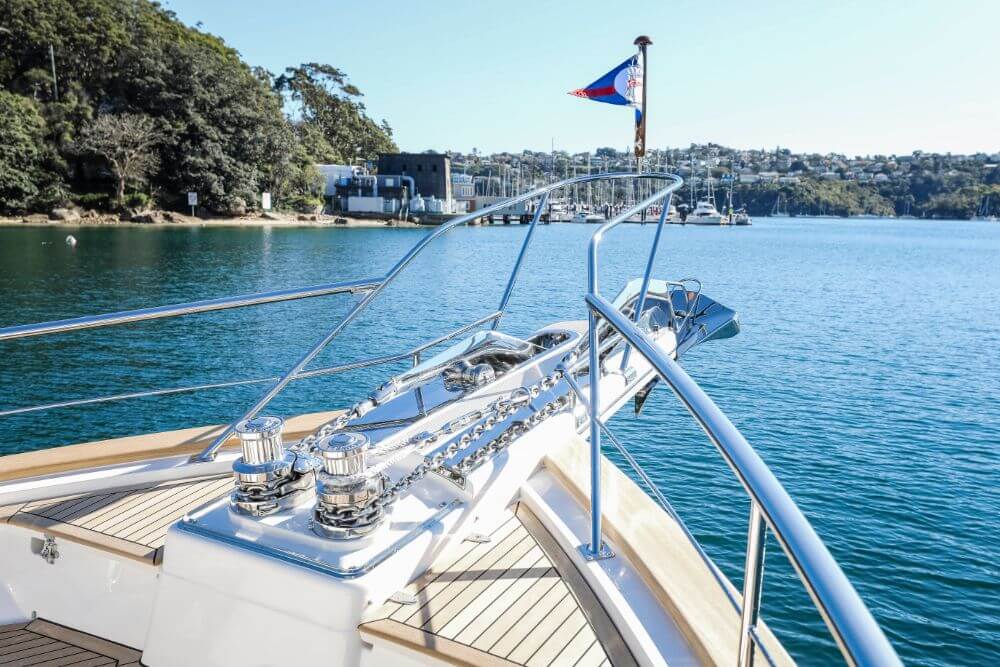A pair of Maxwell horizontal twin chain wheel windlass (for dual anchoring if required) and optional top capstan on a Fleming F65.
IN PART 2 OF OUR HISTORY OF ANCHOR WINCHES RON CZERNIAK LOOKS AT THE DEVELOPMENT OF WINCHES AND CAPSTANS FOR LARGER VESSELS.
Anchors have been used on boats ever since there were boats. And, for many thousands of years, the only way to retrieve an anchor was by manually hauling it up off the sea bottom. Although hard work and, depending on the size of the boat and corresponding anchor, it was bodily managed by stint of a seaman or several crew hauling on whatever type rode* (rope, chain, woven flax or whatever) was used to secure the anchor to the boat. The earliest anchor was likely just a rock with a rode tied around it and thrown overboard to the sea or lake bottom with the other end of the rode secured to the craft.
A very good example of this type of anchor can be found at many museums and the picture below is of a Maori rock anchor with a woven flax rode on exhibit and Auckland Museum in New Zealand.
However, as boats got larger and larger, so did the anchors. By the time global explorations, dating back to the Vikings, Chinese, Arabs, Polynesians and Europeans; as well as many other seafaring peoples, got seriously underway, the anchors were of a size that it became impossible to physically haul them up, no matter how many crewmen were aboard. Thus a mechanical means needed to be introduced. The windlass or anchor winch.
The English word “windlass” is derived from the old Norse words vindáss (vind means “wind”) and áss (means “pole.”) so, it’s a winding pole to bring up the anchor. It’s based on the word “wind” (like winding a watch), not “wind” (like blowing air). It’s just that it retains the same pronunciation in either form. The difference between a winch and a windlass is that the line wraps around and around the cylindrical portion of a winch (drum); whereas the line goes into the forward end of the windlass, passes around the gypsy (cylinder/chainwheel) and exits through a chain pipe into the chain locker.
Somewhere around the 14th century the manual anchor winch (capstan/windlass **), first made its appearance aboard boats. In its earliest form, the capstan consisted of a timber mounted vertically through a vessel’s structure which was free to rotate. Levers, known as bars, were inserted through holes at the top of the timber and used to turn the capstan. A rope wrapped several turns around the drum was thus hauled upon to retrieve the anchor.
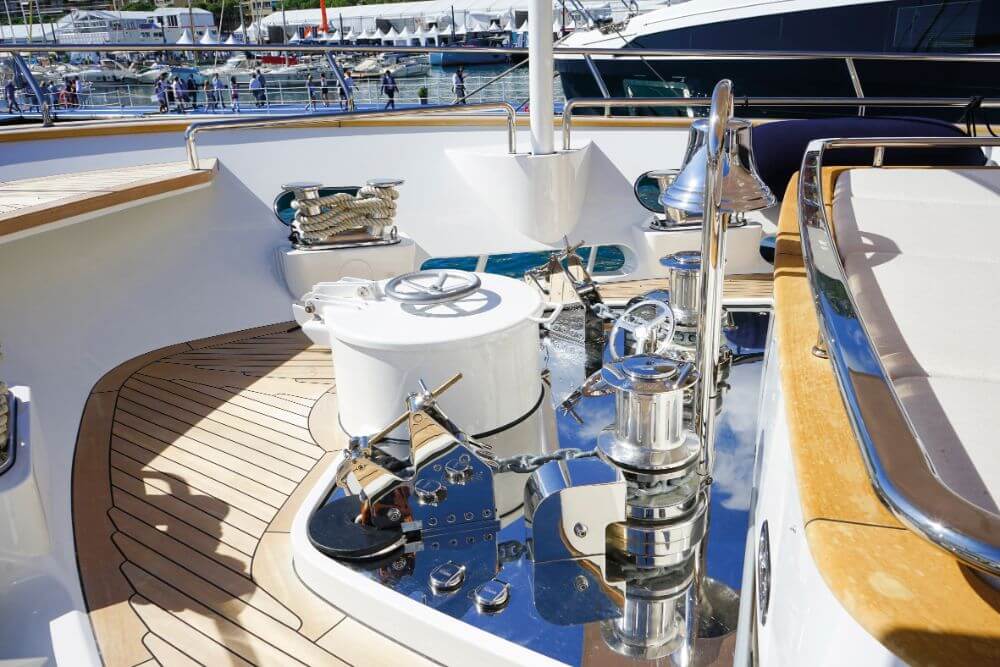
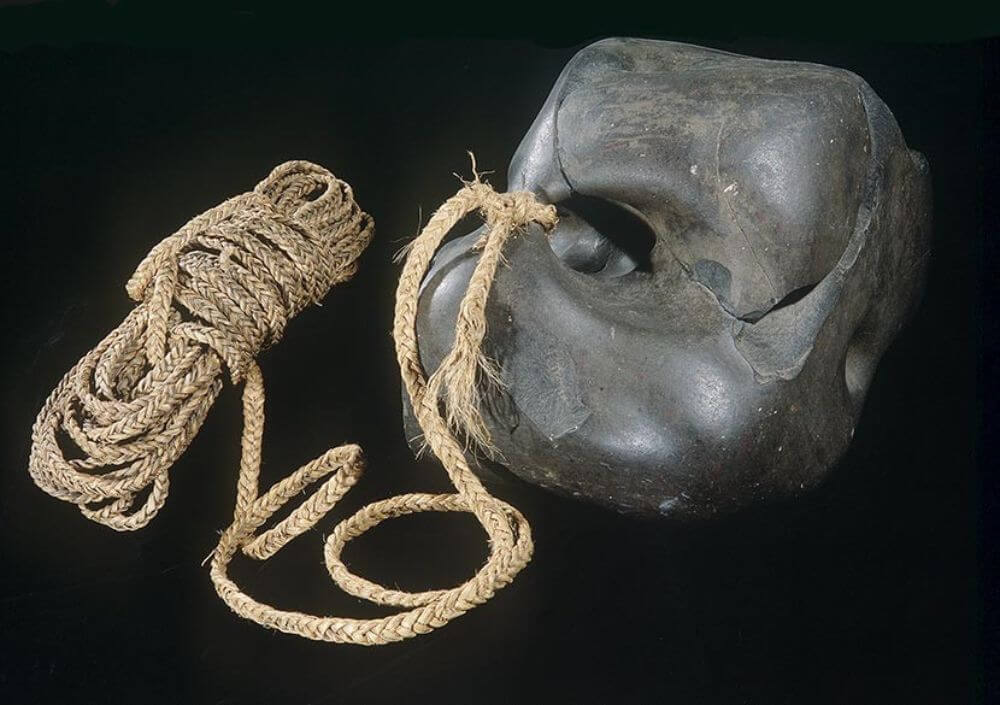
Anchor winches continued to be manually operated well into the 18th century and it was only with the advent of steam, that the anchor winch could be “powered”. Modern capstans are now powered electrically, hydraulically, or sometimes pneumatically. Typically, a gearbox is used which trades reduced speed, relative to the prime mover (engine), for increased torque.
While powered anchor winches became the norm on larger commercial and, to a degree on larger pleasure vessels throughout the 20th century, windlasses certainly were not as common as they are today, especially on recreational power boats between 10 and 30 metres. So, when did anchor winches become the norm rather than the exception on this size range of leisure boats?
As with any history, to make sense of it, you need a start point, so for the sake of this article I will focus on the 1960’s onwards. After all, sixty years is a fair chunk of time take into account when it comes to modern anchor winches. Also, it may be hoped that by using the sixties as a start date this article might provoke some comment from the magazine’s readers and therefore any memories, particularly from our more mature readership, will be welcome and may even generate enough historical information for a spin off article or editorial commentary in a future issue that may trace the use of anchor winches on pleasure craft back to before World War I or maybe earlier? Or at the least, fill in some gaps in the history? For example, it would appear that in the USA back around 1936, the Ideal Windlass Company had actually started to make anchor winches for recreational boats, often modifying them from military or commercial winches.
While anchor winches weren’t commonly seen on trailer boats anywhere in the world up until about the last forty years, for several reasons, they were certainly more common on larger power boats dating back to almost a century ago. First and foremost, it was just too bloody hard to haul in the rode (usually all chain) and anchor by hand, even if you had a few crew or passengers aboard to help with this laborious and often risky task. Manually hauling up the anchor is NOT one of the things anyone likes to do when on their boat. Especially if it is a larger power craft!
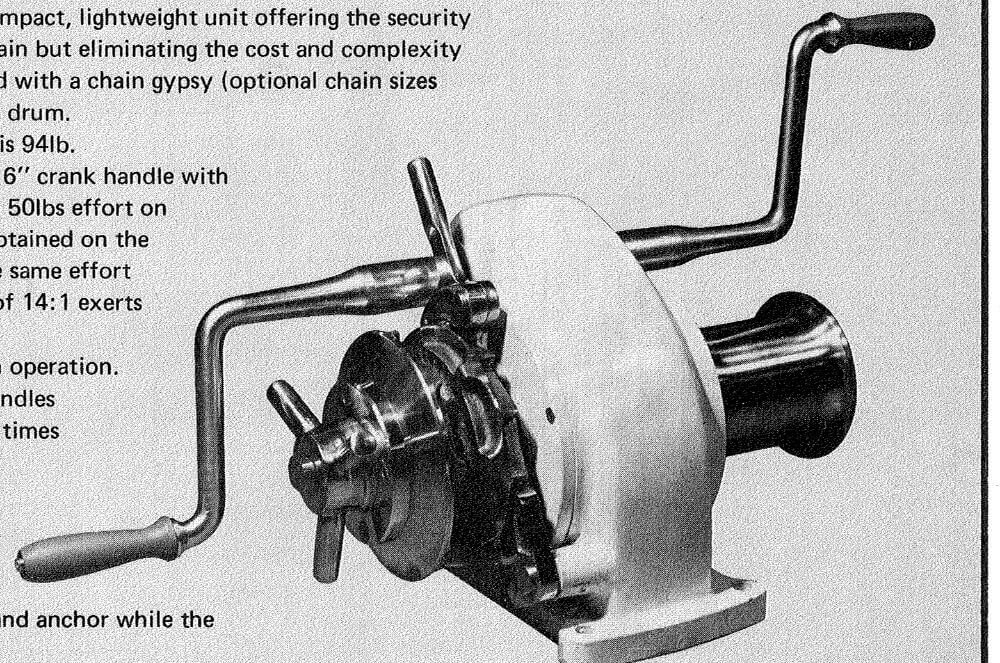
So the need for and use of anchor winches created a demand in the pleasure boat market that had been, for many years, an absolute necessity on commercial and military craft and, no matter how primitive the windlass may have been and even if the only power mode was crew members cranking a manual winch; anchor winches began to appear on mid-sized recreational craft.
In the early days, especially on boats around 10 to 12 metres in length, manual windlasses were quite common. They were simple, easy to install and as long as you had at least one strong crew member on board, the anchor got retrieved as you got your vessel underway for another voyage.
Research indicates that perhaps the most common manual windlasses were of horizontal design. The illustration of an H700 brochure page below speaks for itself.
Although the H700 manual windlass made retrieving the anchor and chain much easier than trying to haul in the chain and anchor hand over hand, it was still hard work. I can certainly attest to this, having installed a Nilsson H700 on my 30’ Easterly sailboat in the mid 1970’s, prior to a voyage to Fiji and back over the winter period of 1979. On more than one occasion, hauling in the 20 kg anchor and the 8 mm chain rode, when all 30 metres of chain was deployed in storm conditions, would have been next to impossible had it not been for the H700!
It is important to keep in mind that on larger pleasure craft, historically the anchor rode was generally all chain. Combination rope/chain rodes were employed, but often were only used for secondary or day anchoring and usually involved just using a simple, powered capstan winch to retrieve the rode and anchor.
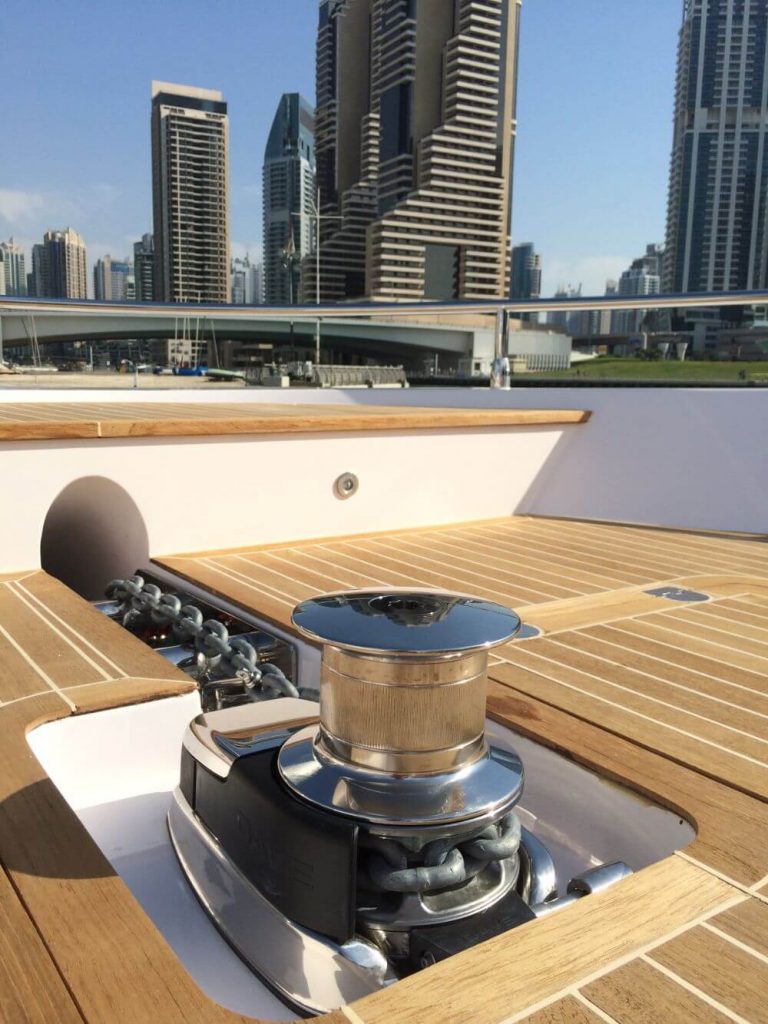

POWERED ANCHOR WINCHES
Moving on, let’s start to look at all chain rode powered anchor winches. In other words, a powered (generally electric or hydraulic) windlass that will effortlessly haul in your anchor connected to a suitable length of galvanised or stainless steel (generally ‘short link’) chain. Gawd, what does that all this even mean? Okay, back to basics.
Ignoring capstan and drum reel winches for the moment, there are two main types of anchor winch. Vertical and horizontal. See definitions and sample images below.
Why two distinctly different types and which is better? To answer the second part of the question first, neither is intrinsically better. However, one type may well be better suited to a particular boat’s bow configuration, deck thickness and anchor (chain) locker design than the other.
For example, if the anchor (chain) locker design is somewhat limited in size, a horizontal windlass may be the better option by stint of the fact that the entire windlass – case, motor, and gearbox is situated above deck. Nothing protrudes through the deck into the anchor (chain) locker space. With a vertical windlass, the chainwheel (gypsy***) and/or capstan drum (topworks) are situated above the deck and the gearbox and motor mounted below, taking up chain locker space.
Hence, two different types of windlass to suit two specific demands. It should be noted however that vertical anchor winches make up the majority of windlass sales as they provide, among other advantages, a 180° wrap of the anchor chain around the chainwheel, giving optimal chain control and minimising slippage or jumping. A horizontal windlass’s design only permits a 90° wrap of the anchor rode around the chainwheel. Suffice it to say, whether it be a vertical or horizontal windlass; raising the anchor becomes an all but effortless task with a powered anchor winch.
But before getting back to our history, one more bit of information needs to be introduced; that is how the windlass is powered. Suffice it to say that on boats of the size we have targeted in this article, an electric motor (either 12 or 24 volt DC) is by far the most common prime mover. Having said that, both hydraulic and electric AC motors have become more common, especially at the larger boat length end of the mid-sized market.
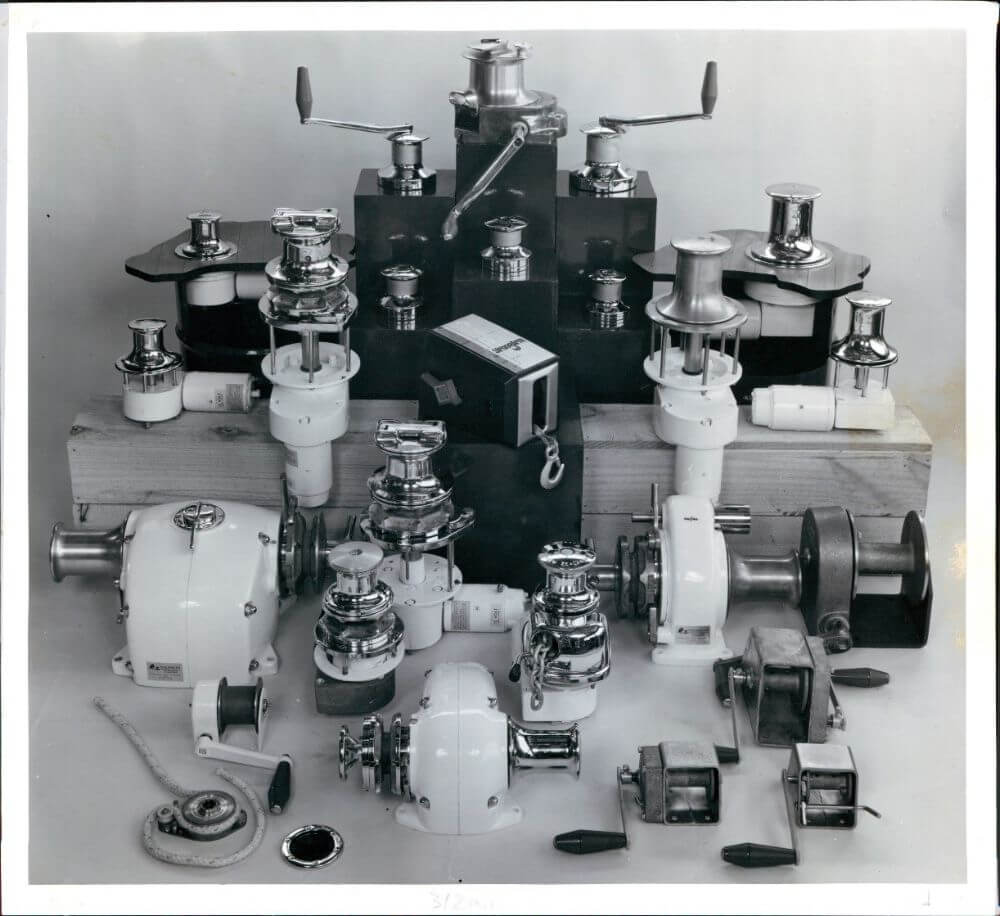

So, when did windlasses start to appear more commonly on pleasure craft? And who started to manufacture them? From what I’ve been able to discover, in general, probably around the early 1960’s. In fact, it was a New Zealand company, James Nilsson Winches & Engineering which had its origins in a company founded by Jim and Faye Nilsson, who about 1968 began to manufacture all sorts of metal componentry.
Building a winch for his father out of washing machine parts, a starter motor and a solid bronze drum, Jim founded a significant winch manufacturing business which by the mid 70’s had a sound export base. Nilsson Winches & Engineering is the longest established winch maker in New Zealand and often broke new ground with innovative designs driven by customer needs.
In the evenings Jim would assemble the winches from the parts Faye had made and set up the machines again for the next day’s machining. It did not take long before he gave up his day job to work full time in winch manufacturing. After continuous growth, the business eventually grew too big for James to manage and he sold out to Lou Fisher. The latter’s son Stephen later took it over and then merged with Maxwell Winches back around 1983, Maxwell-Nilsson Marine was formed by the merging of the assets of Maxwell and Nilsson Winches and in 1985 Maxwell purchased Nilsson outright. Interestingly, many of those earliest Nilsson winches are still in service and a limited range of spare parts is still carried. A testament to the quality of Nilsson products. Further testament to the quality and innovation of the company is witnessed by the fact that a British Company, Simpson Lawrence, approached Nilsson Engineering (after Nilsson’s restraint of trade had expired from the date Maxwell purchased Nilsson Winches) to manufacture a range of anchor winches based on their own designs but greatly improved by Jim. The “Seawinch” ® range of capstans and windlasses continue to be manufactured today and Nilsson Winches & Engineering (in its various guises) remains the longest established winch maker in New Zealand. Simpson Lawrence is now long gone, having been sold to another British Company, Lewmar, several decades ago.
One of the distinctive features of the Maxwell-Nilsson anchor winches was the two pronged, hinged arms atop the capstan drum, which could be swung out and used as levers to loosen the clutch cones for free-fall anchoring or tightened to re-engage the chainwheel clutch cones so that the anchor could be retrieved under power.
Meanwhile in Europe, one of the early windlass manufacturers to start designing and building anchor winches for the pleasure boat market, was the Italian company, Lofrans. Lofrans was founded in Monza, Italy in 1966 and since then has been dedicated to designing and manufacturing windlasses and anchor management solutions that combine top performance, absolute safety and style. For many decades Lofrans enriched the market with innovative solutions and a quick look at one of their original horizontal windlasses compared to one of their present day units illustrates how far they have come over the decades, while still retaining their rugged “agricultural” appearance.
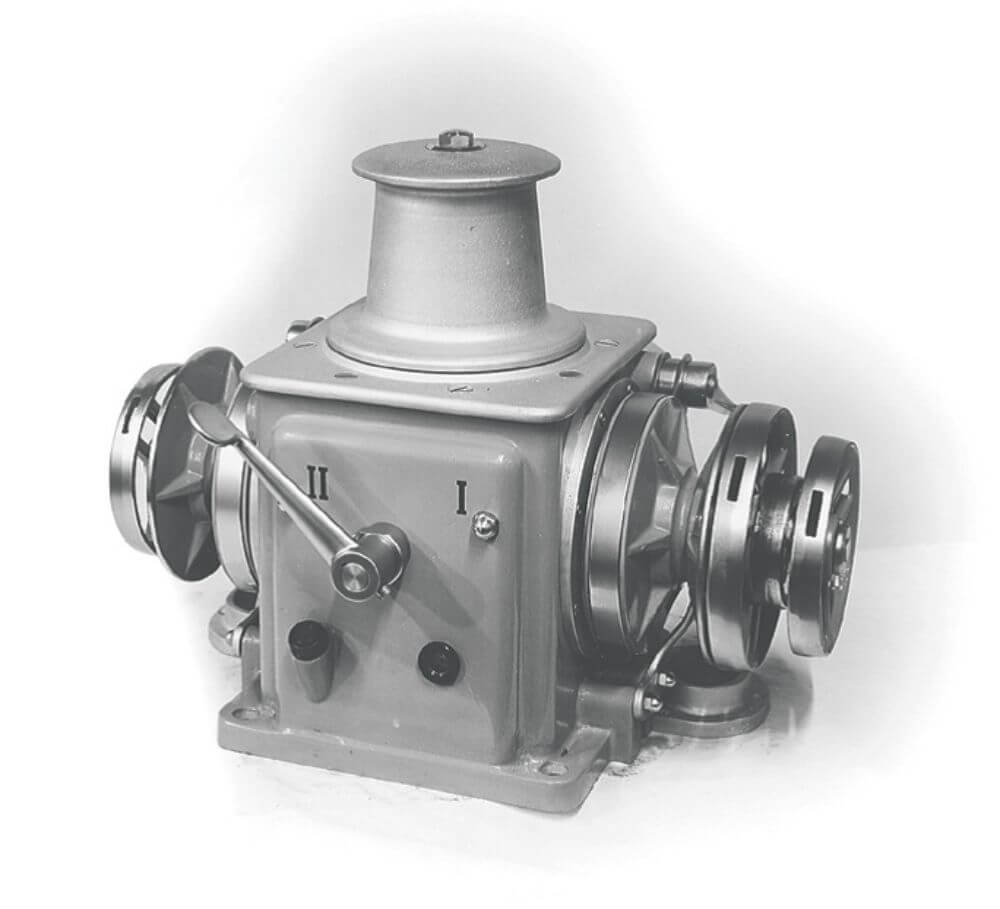
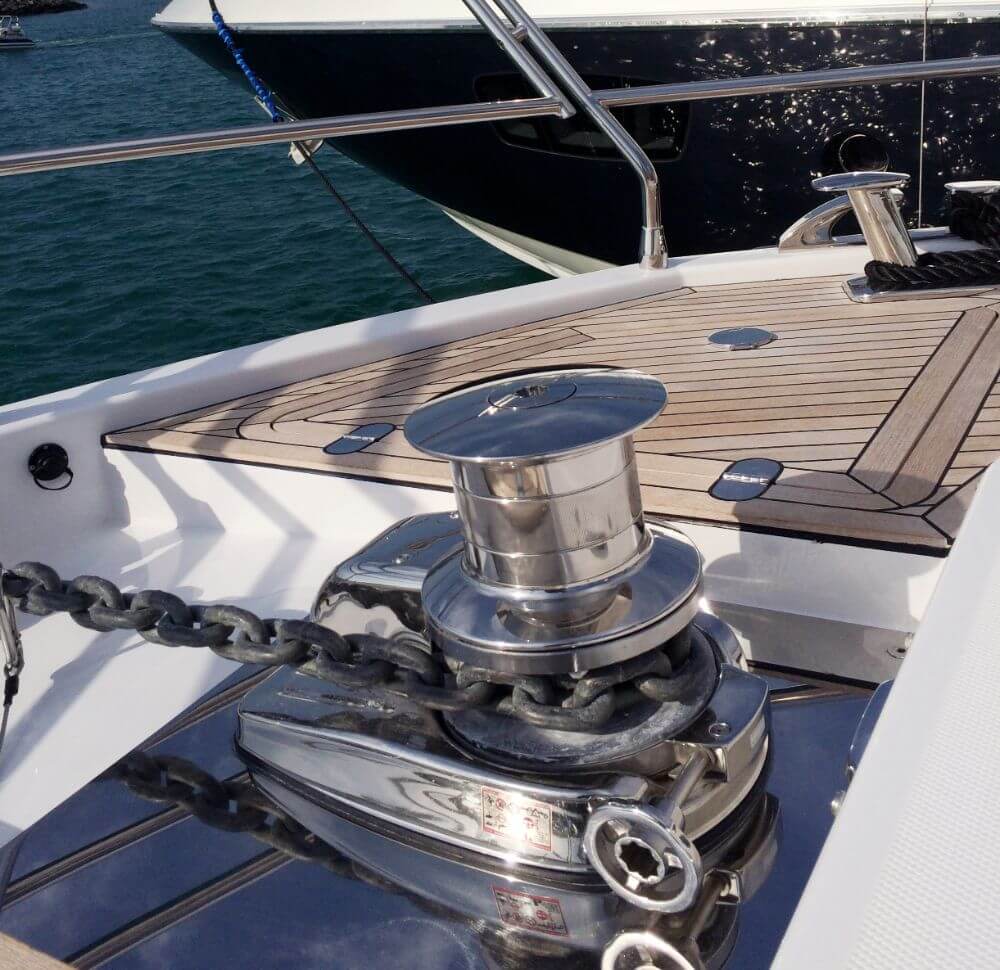
AFTERMARKER PRODUCT
The interesting thing about anchor winches on recreational boats is the fact that back in the sixties and seventies they were seldom fitted by boat builders when the boats were actually being constructed. Anchor winches may have been offered to a prospective customer as an option during construction, but, by and large, they were very much an “aftermarket” product. That is, someone bought a boat and if not fitted with an anchor winch, they sourced it from one of a variety of manufacturers, and either installed it themselves or had a marine tradesperson do it. Obviously it was both inconvenient and generally a lot more expensive to install afterwards than it would have been to install it on the boat during construction.
In New Zealand, there are numerous examples of ‘launches’ built prior to and after WWII which have retrofitted anchor winches installed on their bows, whether they be simple powered capstans operated from the bow by means of a humble watertight footswitch or more elaborate, all chain and/or combined rope/chain models operated conveniently and safely from the comfort of the helm station.
It wasn’t until the late 80’s/early 90’s that the retrofit trend began to change and we saw more and more boat yards fitting anchor winches as standard during the actual build. Amazing to think that it took this long for boat builders to fit an arguably indispensable piece of equipment on mid-range to larger pleasure craft! Today, just about anywhere in the world, mid-sized boats are generally fitted with some type of anchor winch before they leave the boat yard.
Although boats are now routinely fitted with some sort of anchor winch, interestingly, whereas in the Southern Hemisphere the windlass is used frequently, in North America and Europe, this is often not the case. Why this anomaly? Quite simply because here in New Zealand and Australia, when we go boating we tend to explore and drop the anchor in more bays and coves than they do in the rest of the world. Hence we are deploying and retrieving the anchor on a regular basis, making a windlass more of a necessity than a nicety.
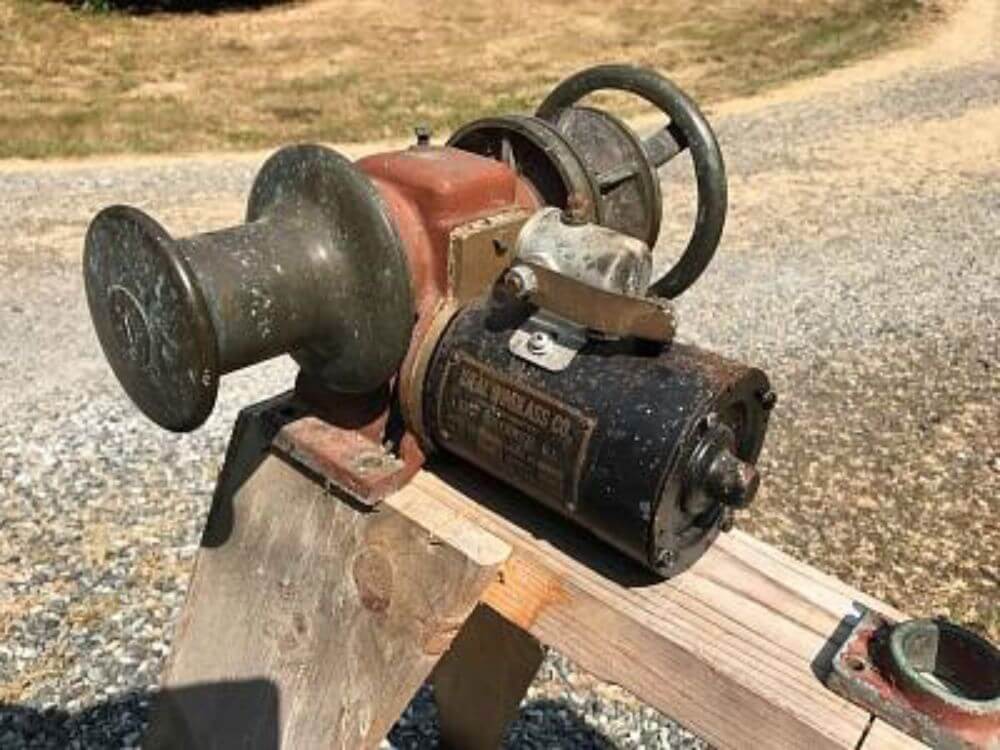
“Marina hopping”, as it is often referred to by purist boaties, is eminently more common in North America and Europe than in is in the Antipodes. As the term implies, many boaters in the Northern Hemisphere generally voyage from marina to marina, overnighting for a day or two and moving on again during the duration of any particular voyage. Although more and more marinas are now dotting our coastlines, they are still not as common as our northern neighbours have become accustomed to having available to them.
While actually deploying the anchor on one’s boat at the end of a day’s voyage is practised less frequently north of the equator, it would appear that the design and manufacture of anchor winches for larger leisure craft probably started in the USA back in the 1930’s when the likes of the Ideal Windlass Company and others such as Allan Cunningham Marine and RC Plath started producing windlasses for the pleasure marine market.
Post the 1940’s and moving into the 1950’s and 1960’s, pleasure boats started to become less utilitarian in appearance and, in general, sleeker and more ‘modern’ looking. As a consequence an interesting evolution saw the need for the anchor winch to not only work well but to also look great. The owner of a luxury 20 metre vessel certainly didn’t want to be steering the boat from the helm station looking towards the horizon and seeing, mounted on the bow, an ugly hunk of metal (refer images). So now, manufacturers had to ensure that the windlasses they built were durable, dependable and also beautiful. Fortunately, as is often the case with any piece of equipment, form follows function and windlass designers started to focus just as much on the aesthetics of the windlass as they did on its reliable function. As a result, today’s windlasses (by in large) are pleasing examples of beautifully sculpted metal on the boat’s bow.
Surprisingly there are only a handful of historically dedicated “windlass manufacturing companies’ around the world today catering to the leisure boat market. Thus far I have mentioned the likes of Maxwell and Nilsson in New Zealand, Ideal in the USA and Lofrans in Italy; but there are also a few other well recognised and respected international manufacturers. For instance, Muir in Australia, Lewmar in Britain, Italwinch and Quick in Italy; all of whom have been designing and manufacturing anchor winches for the last several decades. Additionally, other more recent Chinese manufacturers such as Bada and South Pacific have emerged.

PART THREE
In a future article we will look at real, various sized boats from 10 to 30 metres with numerous different windlass installations showing the variety of choices available to the modern boat owner. Also to be discussed will be the wide range of anchoring accessories available for easier, varied and safer anchoring. We will also investigate a number of different power types from 12 volt DC electric to hydraulic and discuss what options are perhaps best for your vessel. We will give you some tips on proper installations, maintenance and the numerous myths surrounding anchor winches. Finally, we will look to the future and explore the latest trends in anchoring such as DPS Systems and ‘skyhook’ type setups which are now starting to be used on smaller boats as well as those over 100 metres.


GLOSSARY
* Rode: The line that secures the boat to the anchor. This may consist of all chain, all rope, or a combination of rope and chain.
** Capstan: Often referred to as a drum, rope drum, or warping drum, the capstan is primarily used for hauling rope. A windlass is a machine for raising a weight by winding rope and/or chain around a drum or chainwheel, driven by a crank, motor, etc.
*** Gypsy: Frequently referred to as a chain wheel or wildcat. A special wheel with pockets, to accommodate a specified chain size, for hauling up the chain and anchor. With automatic rope/chain systems the gypsy is designed to haul both rope and chain, including the smooth transition of the rope/chain splice.


